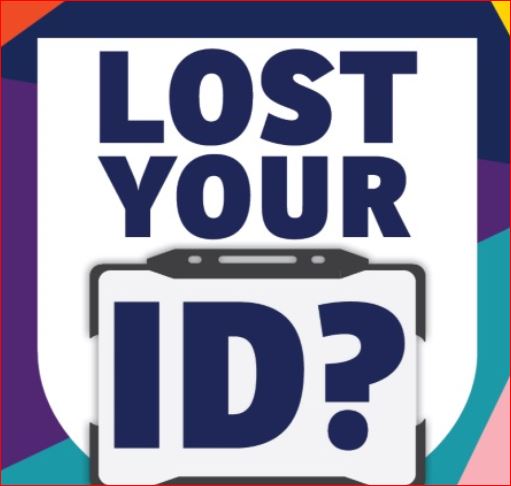How to Tell if Your Organization Has Identity Management Issues
Introduction
At the beginning of the Covid-19 pandemic, companies suffered because it was impossible for employees to come into the office. Although many companies were forced to adapt various processes to accommodate this new “virtual world”, these changes brought about many technological advances and newfound applications.
Now, as we return to a “new normal”
and workers begin returning to the office or becoming comfortable in hybrid environments, some companies want to revert back to their pre-pandemic operations. However, is this truly the best decision? Or should they analyze what has worked and what can be done to improve their current operations?
If companies ever wish to be prepared for the next “unexpected obstacle”, it is necessary to think outside the box.
Instead of addressing today’s issues, you have to address both the issues of the present and the issues of the future. As a company, you can easily start doing this today by analyzing your internal operations and identifying what aspects can be improved.
Today, we will be discussing the side effects of identity management issues and how your organization can easily diagnose them. If your business is ready to start planning for the future, here’s how your organization can tell if it has identity management issues:
Now, as we return to a “new normal”
and workers begin returning to the office or becoming comfortable in hybrid environments, some companies want to revert back to their pre-pandemic operations. However, is this truly the best decision? Or should they analyze what has worked and what can be done to improve their current operations?
If companies ever wish to be prepared for the next “unexpected obstacle”, it is necessary to think outside the box.
Instead of addressing today’s issues, you have to address both the issues of the present and the issues of the future. As a company, you can easily start doing this today by analyzing your internal operations and identifying what aspects can be improved.
Today, we will be discussing the side effects of identity management issues and how your organization can easily diagnose them. If your business is ready to start planning for the future, here’s how your organization can tell if it has identity management issues:


1). Lack of Security and Compliance
With the increasing ability for companies to be hacked, the need for proper security and compliance protocols has never been more prominent. SecurityScorecard, a global leader in cybersecurity ratings, claims that security and compliance is crucial to avoiding fines and protecting your company’s reputation. It also says that both security and compliance are necessary to protect your company financially and legally.
Threats to security typically arise when lost IDs are used by other individuals or when IDs continue to work even though an individual no longer works for your company. When unauthorized individuals gain access to your company, it is difficult to verify who is onsite and what they are doing. Therefore, lack of security directly threatens the safety of your employees, goods, and services.
On the other hand, issues with compliance typically show themselves in the following two ways:
1). Credentials and certifications continuously expiring without management’s knowledge — when this happens, it is difficult for management to track which employees are compliant in regards to having the proper credentials. Eventually, this could lead to legal problems involving reputation, contracts and even payroll.
2). Frequent buddy punches — a buddy punch occurs when an employee clocks-in on behalf of another employee who is absent. These actions not only make it difficult to make sure employees are compliant to attendance, but it also makes it hard for management to track who is onsite. In the end, your company could lose money because it could end up paying employees who are not working. Furthermore, should an accident occur at the job site, there would be issues when accounting for all the onsite employees.
Once coping with the reality of a pandemic on the construction site, an owner then decides on how to implement OSHA, CDC, state and local COVID-19 guidelines (or may be forced to by governing bodies). This includes such protocols as a six-foot physical distancing rule between workers, the use of physical barriers between workers in indoor environments, adopting staggered shifts or maximum personnel on site rules, wearing highly rated PPE, personal hygiene practices, surface sanitizing, decontamination or disposal of PPE, preventing shared use of objects, and screening all visitors to the job site.
Maximum worker rules or staggered shifts obviously reduce labor capacity at the macro scale, while social distancing guidelines on busy sites slow down productivity, as workers have to negotiate the obstacle of each other’s personal space. Cleaning and sanitizing protocols necessitate either new dedicated cleaning staff, or more time and training from existing laborers. The observance of PPE rules causes workers to need more cool-off breaks, and extra procedures around hygiene, decontamination, disposal, and sharing of tools require extra time. When the aggregate effect of all these activities is felt, it becomes quite clear that COVID-19 safety protocols constitute a sizeable drag on site productivity and time away from project goals.
In addition to dealing with the cost of extra staff and lowered productivity, GCs also have to spend money on ordering mass quantities of PPE, expanding on-site temp office spaces and lunch rooms for social distancing, and adding ventilation infrastructure and hand washing stations. Major industrial construction companies typically bear a much greater portion of indirect costs on projects; owner organizations that are especially cautious of COVID-19 outbreaks endure ballooning indirect expenses at scale to manage the challenge.
Threats to security typically arise when lost IDs are used by other individuals or when IDs continue to work even though an individual no longer works for your company. When unauthorized individuals gain access to your company, it is difficult to verify who is onsite and what they are doing. Therefore, lack of security directly threatens the safety of your employees, goods, and services.
On the other hand, issues with compliance typically show themselves in the following two ways:
1). Credentials and certifications continuously expiring without management’s knowledge — when this happens, it is difficult for management to track which employees are compliant in regards to having the proper credentials. Eventually, this could lead to legal problems involving reputation, contracts and even payroll.
2). Frequent buddy punches — a buddy punch occurs when an employee clocks-in on behalf of another employee who is absent. These actions not only make it difficult to make sure employees are compliant to attendance, but it also makes it hard for management to track who is onsite. In the end, your company could lose money because it could end up paying employees who are not working. Furthermore, should an accident occur at the job site, there would be issues when accounting for all the onsite employees.
Once coping with the reality of a pandemic on the construction site, an owner then decides on how to implement OSHA, CDC, state and local COVID-19 guidelines (or may be forced to by governing bodies). This includes such protocols as a six-foot physical distancing rule between workers, the use of physical barriers between workers in indoor environments, adopting staggered shifts or maximum personnel on site rules, wearing highly rated PPE, personal hygiene practices, surface sanitizing, decontamination or disposal of PPE, preventing shared use of objects, and screening all visitors to the job site.
Maximum worker rules or staggered shifts obviously reduce labor capacity at the macro scale, while social distancing guidelines on busy sites slow down productivity, as workers have to negotiate the obstacle of each other’s personal space. Cleaning and sanitizing protocols necessitate either new dedicated cleaning staff, or more time and training from existing laborers. The observance of PPE rules causes workers to need more cool-off breaks, and extra procedures around hygiene, decontamination, disposal, and sharing of tools require extra time. When the aggregate effect of all these activities is felt, it becomes quite clear that COVID-19 safety protocols constitute a sizeable drag on site productivity and time away from project goals.
In addition to dealing with the cost of extra staff and lowered productivity, GCs also have to spend money on ordering mass quantities of PPE, expanding on-site temp office spaces and lunch rooms for social distancing, and adding ventilation infrastructure and hand washing stations. Major industrial construction companies typically bear a much greater portion of indirect costs on projects; owner organizations that are especially cautious of COVID-19 outbreaks endure ballooning indirect expenses at scale to manage the challenge.
2). Poorly Managed Physical IDs
Right now, the typical onboarding process can take anywhere from one day to well over three months. Once completing this extended on-boarding process, new hires typically receive physical ID badges. However, what happens to these badges? And what are they used for? Well, the average worker will use this badge to gain access to the job-site, clock-in and out, and maybe even prove their identity. The issue with these physical badges is that they are easily lost or forgotten. When these physical IDs are poorly managed, it becomes difficult to verify compliance and safety.

3). Issued IDs Do Not Connect to Other Internal Systems
Other identity management issues stem from inefficient onboarding systems and poor organization. When onboarding systems fail to add new hires to internal systems in a timely manner, it becomes difficult to manage who is onsite and whether or not they have the proper credentials. When new hires are not in the system, companies may also have issues with tracking their hours and verifying their compliance. These issues are particularly important because they could lead to lawsuits.
When internal systems are poorly organized, it can be difficult to keep track of documentation and assigned work. These issues typically arise when workers are not properly segmented in the company’s internal systems, therefore, you cannot tell who completes what task.
In conclusion, poorly managed physical IDs, a disconnect between IDs and internal systems, and other issues that show a lack of security and compliance can all point towards identity management issues within your organization. Now that you know about how these issues can harm your company, the question remains, what will you do about them? Will you leave them untouched? Or will you address them to the best of your ability in order to help your company be prepared for the next “unexpected obstacle”?
When internal systems are poorly organized, it can be difficult to keep track of documentation and assigned work. These issues typically arise when workers are not properly segmented in the company’s internal systems, therefore, you cannot tell who completes what task.
In conclusion, poorly managed physical IDs, a disconnect between IDs and internal systems, and other issues that show a lack of security and compliance can all point towards identity management issues within your organization. Now that you know about how these issues can harm your company, the question remains, what will you do about them? Will you leave them untouched? Or will you address them to the best of your ability in order to help your company be prepared for the next “unexpected obstacle”?
